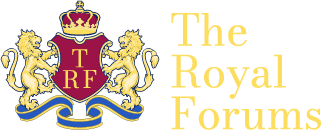MasquedCount
Newbie
- Joined
- Jan 6, 2011
- Messages
- 4
- City
- Nashville
- Country
- United States
I would like some clarification on positions in current & past Imperial & Royal Households. I understand many are based on Germany or Byzantine Empire or early France.
I feel like something is being lost in translations or are they accurate? I know it differs from household to household but could someone clarify perhaps the normal standard differences between the Chamberlain (or chamberlains), the Master of the Court or Household, and the Court Marshal/Grand Marshal?
I undertand the Grand Chamberlains are usually ceremonial, are there other chamberlains?
It becomes more murky for me in the differences in most courts between the Grand Master/Master of the Household/Court and the Grand Marshal or Court Marshal.
Also some use Chancellor, perhaps some clarification on that too.
Can this be moved to Royal Ceremony and Protocol? May get more of answer there hopefully.
I feel like something is being lost in translations or are they accurate? I know it differs from household to household but could someone clarify perhaps the normal standard differences between the Chamberlain (or chamberlains), the Master of the Court or Household, and the Court Marshal/Grand Marshal?
I undertand the Grand Chamberlains are usually ceremonial, are there other chamberlains?
It becomes more murky for me in the differences in most courts between the Grand Master/Master of the Household/Court and the Grand Marshal or Court Marshal.
Also some use Chancellor, perhaps some clarification on that too.
Can this be moved to Royal Ceremony and Protocol? May get more of answer there hopefully.
Last edited by a moderator:



